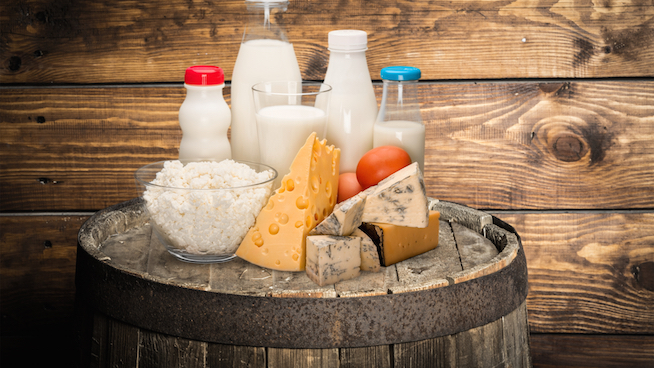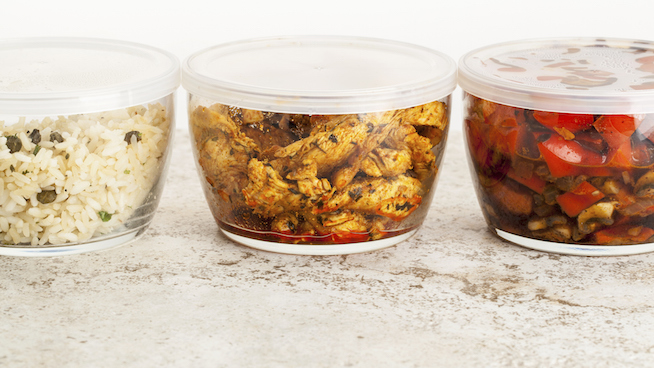Superfoods of the Holiday Season
Unfortunately, the holiday season is too often seen as a time for splurging and leniency about straying from well-balanced meal plans. Yet fall and winter are the harvest periods for many healthy fruits and vegetables.
Don’t let the holidays shift your focus from fueling your body and keeping up with your athletic endeavors. Below are several superfoods that shine brightly this time of year. (Here’s a Guide to Healthy Holiday Eating.)
Green Beans
Full of antioxidants, rich in carotenoids and flavonoids and a great source of vitamin C, green beans, like many vegetables, are also high in fiber and low in fat. These properties help support cardiovascular health and help reduce inflammation in the body. My favorite way to prepare fresh green beans for the holidays is roasting them in the oven with a drizzle of olive oil and salt.
Sweet Potatoes
Due to their naturally sweet taste and typical holiday preparation with sugar and marshmallows, sweet potatoes are often thought of as an unhealthy side dish. However because they’re so rich in vitamin A and antioxidants, they actually reign supreme over the white potato. Unlike many other starch sides, sweet potatoes, as a lower glycemic food and a good source of fiber, actually help regulate blood sugar. To avoid making plain sweet potatoes unhealthy, just be careful how you dress them up. With their slightly sweet taste, they go perfectly with a dash of cinnamon.
Spiced Almonds
Almonds, rich in omega-3 fats, help lower cholesterol and triglycerides in the body. These healthy fats also keep you full, while serving as a great snack option between holiday meals—as long as you keep your portions in control. Also be mindful of salted nuts, because excess sodium can cause water retention and affect heart health. Try roasting raw almonds with spices such as ginger or nutmeg to add some holiday flair.
Pumpkin
Pumpkin can be deceiving with its rich, nutty taste. It seems like it would be high in calories and fat. However, pumpkin is actually a low-calorie, low-fat food, with no saturated fat or cholesterol. It’s a rich source of fiber, antioxidants and vitamins A, C and E. I like to add a can of pumpkin to chili or soup to give it a thick, hearty flavor without adding cream and other high calorie ingredients. A pumpkin pie also provides more nutrients than a sugary fruit pie or custard!
Beef Tenderloin
Red meat is one of the foods you are warned to stay away from due to its potential for increasing risk of cardiovascular disease. But a lean piece of beef can actually be beneficial to your health as part of a well-rounded diet. Lean meat is a great source of protein, vitamin B12 and the minerals selenium and zinc. These nutrients have been shown to help lower the risk for certain cancers and reduce inflammation in the body. Look for a lean cut of beef, and trim the fat before cooking and serving. A good tip is to cook the meat for a long time at a low temperature to keep the flavor without the fat.
Cranberries
The deep red color of the cranberry reflects the richness of its nutrients. Cranberries contain a vast amount of phytonutrients, giving them strong antioxidant, anti-inflammatory and anti-cancer properties. They are commonly known for boosting urinary and digestive tract health, as well. With their high vitamin C content, cranberries also boost the immune system. The best way to benefit from all of these beneficial properties is to eat the fruit as a whole rather than in sweetened cranberry juice or cranberry sauce.
Turkey
Turkey is lean meat high in protein and naturally low in fat. It’s also a good source of folic acid B vitamins—and of selenium, which is essential for healthy function of the thyroid and immune system. Choose white meat over dark meat and remove the skin after cooking. Also, select trusted brands free of hormones and other additives.
RECOMMENDED FOR YOU
MOST POPULAR
Superfoods of the Holiday Season
Unfortunately, the holiday season is too often seen as a time for splurging and leniency about straying from well-balanced meal plans. Yet fall and winter are the harvest periods for many healthy fruits and vegetables.
Don’t let the holidays shift your focus from fueling your body and keeping up with your athletic endeavors. Below are several superfoods that shine brightly this time of year. (Here’s a Guide to Healthy Holiday Eating.)
Green Beans
Full of antioxidants, rich in carotenoids and flavonoids and a great source of vitamin C, green beans, like many vegetables, are also high in fiber and low in fat. These properties help support cardiovascular health and help reduce inflammation in the body. My favorite way to prepare fresh green beans for the holidays is roasting them in the oven with a drizzle of olive oil and salt.
Sweet Potatoes
Due to their naturally sweet taste and typical holiday preparation with sugar and marshmallows, sweet potatoes are often thought of as an unhealthy side dish. However because they’re so rich in vitamin A and antioxidants, they actually reign supreme over the white potato. Unlike many other starch sides, sweet potatoes, as a lower glycemic food and a good source of fiber, actually help regulate blood sugar. To avoid making plain sweet potatoes unhealthy, just be careful how you dress them up. With their slightly sweet taste, they go perfectly with a dash of cinnamon.
Spiced Almonds
Almonds, rich in omega-3 fats, help lower cholesterol and triglycerides in the body. These healthy fats also keep you full, while serving as a great snack option between holiday meals—as long as you keep your portions in control. Also be mindful of salted nuts, because excess sodium can cause water retention and affect heart health. Try roasting raw almonds with spices such as ginger or nutmeg to add some holiday flair.
Pumpkin
Pumpkin can be deceiving with its rich, nutty taste. It seems like it would be high in calories and fat. However, pumpkin is actually a low-calorie, low-fat food, with no saturated fat or cholesterol. It’s a rich source of fiber, antioxidants and vitamins A, C and E. I like to add a can of pumpkin to chili or soup to give it a thick, hearty flavor without adding cream and other high calorie ingredients. A pumpkin pie also provides more nutrients than a sugary fruit pie or custard!
Beef Tenderloin
Red meat is one of the foods you are warned to stay away from due to its potential for increasing risk of cardiovascular disease. But a lean piece of beef can actually be beneficial to your health as part of a well-rounded diet. Lean meat is a great source of protein, vitamin B12 and the minerals selenium and zinc. These nutrients have been shown to help lower the risk for certain cancers and reduce inflammation in the body. Look for a lean cut of beef, and trim the fat before cooking and serving. A good tip is to cook the meat for a long time at a low temperature to keep the flavor without the fat.
Cranberries
The deep red color of the cranberry reflects the richness of its nutrients. Cranberries contain a vast amount of phytonutrients, giving them strong antioxidant, anti-inflammatory and anti-cancer properties. They are commonly known for boosting urinary and digestive tract health, as well. With their high vitamin C content, cranberries also boost the immune system. The best way to benefit from all of these beneficial properties is to eat the fruit as a whole rather than in sweetened cranberry juice or cranberry sauce.
Turkey
Turkey is lean meat high in protein and naturally low in fat. It’s also a good source of folic acid B vitamins—and of selenium, which is essential for healthy function of the thyroid and immune system. Choose white meat over dark meat and remove the skin after cooking. Also, select trusted brands free of hormones and other additives.












